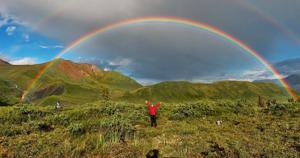Rainbows, those beautiful bands of color that grace the sky after rain, have fascinated people for ages. They show us how sunlight and water work together to create something magical. At the center of a rainbow is the interaction between sunlight and tiny water droplets in the air.
Sunlight, which contains all colors from red to violet, enters these droplets and goes through a series of changes: refraction and reflection. Refraction happens when light bends as it enters a water droplet, because light travels differently through water than through air. This bending is different for each color of light; shorter wavelengths like blue bend more than longer ones like red.

Inside the droplet, light reflects off its inner surface, changing its direction again. When the light exits the droplet, it bends again, spreading out into all the colors we see in a rainbow: red, orange, yellow, green, blue, indigo, and violet which is remembered as ROYGBIV. Each color corresponds to a specific wavelength, with red having the longest wavelength and violet the shortest.
Scientists use experiments with prisms or controlled water surfaces to understand how rainbows form. These experiments help them see how light behaves in different situations and confirms their theories about how light spreads out into colors in the atmosphere. The colors we see in a rainbow can change based on factors like the size of the water droplets and the angle of sunlight.
Larger droplets create more vivid rainbows. The a.
















